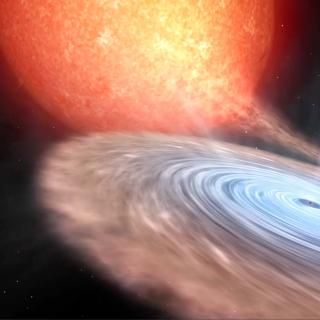Bibcode
Casares, J.; Orosz, J. A.; Zurita, C.; Shahbaz, T.; Corral-Santana, J. M.; McClintock, J. E.; Garcia, M. R.; Martínez-Pais, I. G.; Charles, P. A.; Fender, R. P.; Remillard, R. A.
Bibliographical reference
The Astrophysical Journal Supplement, Volume 181, Issue 1, pp. 238-243 (2009).
Advertised on:
3
2009
Citations
73
Refereed citations
67
Description
In Casares et al. we presented the first radial velocity curve of the
companion star to BW Cir which demonstrates the presence of a black hole
in this historical X-ray transient. But these data were affected by
aliasing and two possible periods at 2.5445 days and 2.5635 days were
equally possible. Here we present new spectroscopic data that enable us
to break the 1-year aliasing and confirm 2.5445 days as the correct
orbital period. We also present R-band photometry over 14 years, which
reveals the presence of important flaring activity dominating the light
curves.
Related projects

Black holes, neutron stars, white dwarfs and their local environment
Accreting black-holes and neutron stars in X-ray binaries provide an ideal laboratory for exploring the physics of compact objects, yielding not only confirmation of the existence of stellar mass black holes via dynamical mass measurements, but also the best opportunity for probing high-gravity environments and the physics of accretion; the most
Montserrat
Armas Padilla